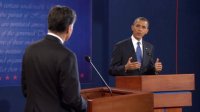Using Technology to Teach About the Election
Your content has been saved!
Go to My Saved Content.I will freely admit that I can be a bit of a political junkie from time to time. I listen to the news every morning, and I love talk radio in the evenings. I try to stay abreast of the goings on in the world and in our country. That is why I can see nothing more important than taking advantage of the election to engage our students in the political process and to help them begin forming their own viewpoints on real issues.
Teaching about the election is nothing new. I remember sitting in front of the television watching the debates for homework back in the early '90s. However, the interactive websites and tools available to students and teachers today make teaching the election a completely different ball game. Students can now participate in online polls, read news at their reading level, and play interactive games that help them understand political issues and processes. Teachers can use technology tools to facilitate polls, discussions and debates in their own classrooms. Here are some examples of how technology can bring the election to life in your classroom.
Online Polling
Use a tool like PollEverywhere or even classroom "clickers" to have students anonymously vote on either political issues or candidates themselves. Have them compare and contrast the class results with national results. A tweet came across my path the other night that gave a great idea for avoiding students voting based on the candidate names. The teacher provided his students with a variety of questions based on the candidates' political stance on issues, and then he revealed to kids, after they had voted, which candidate their beliefs were actually aligned to. While it's easy to do paper ballots or voting by raising hands, technology provides immediate responses and allows for truly anonymous voting.
Discussions and Debates
Break students into groups and have them research each candidate to prepare for a debate. Students can either take turns debating or the teacher can assign roles (researcher, writer, debater). To save time, create a custom Google Search Engine of election sites. You could also use an online chat tool such as Today’s Meet to moderate a dialogue on an election topic. This kind of debate or dialogue can even extend beyond the school walls by coordinating with another teacher so that students across two schools (or more) are able to discuss an election topic.
To take debate to the next level, partner up with a teacher in another school in another state (preferably one that may be very different from yours) and have students prepare a debate through Skype or Google Hangout. Or, for something a bit more laid back, connect your students with those in another state to simply discuss various issues that are "hot topics" in the election.
Here are some useful websites to help you approach electoral politics with your students:
